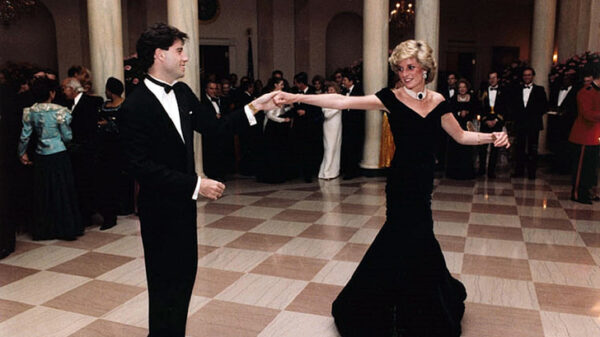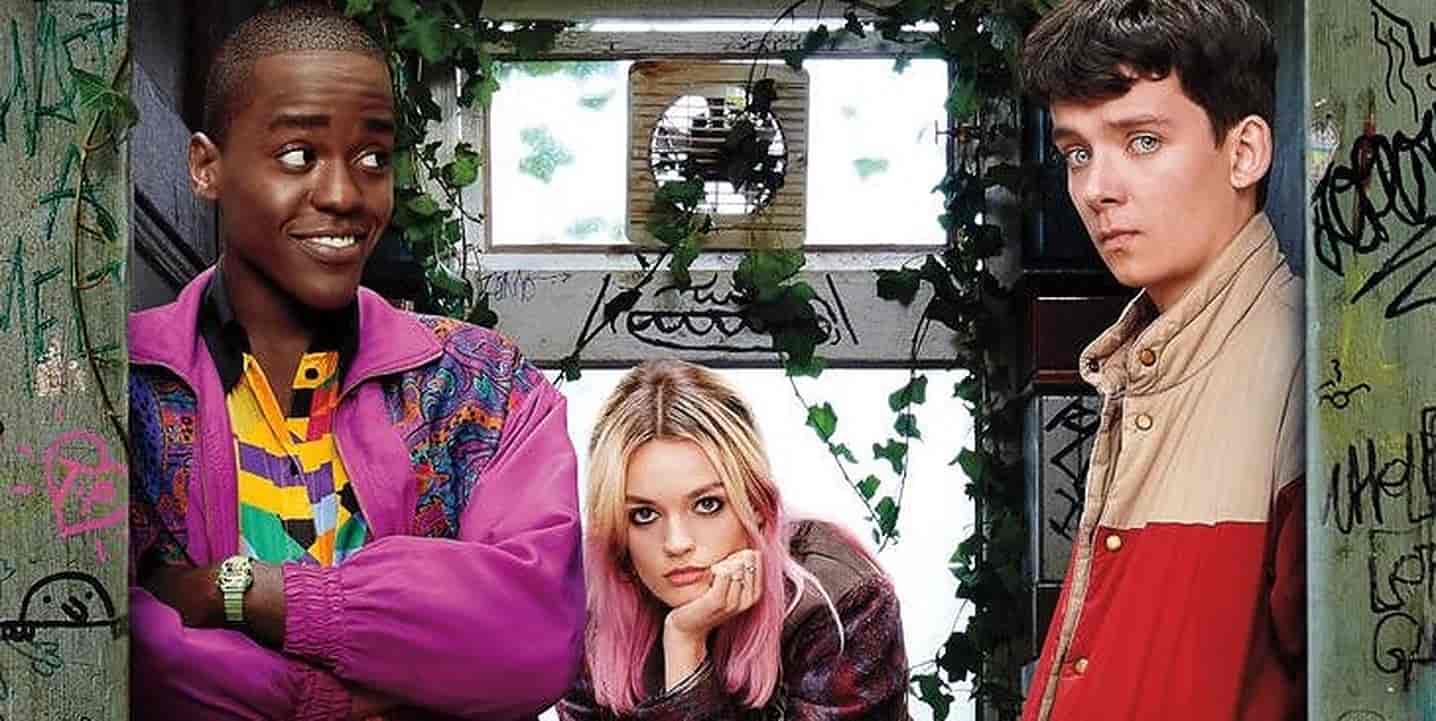Staff writer Isabelle Hickman speaks about the controversy surrounding “Monster: The Jeffrey Dahmer Story”.
TW: Murder, Sexual Assault, Cannibalism, Racism, Crimes Against the LGBTQ+ Community, Paedophilia, Homophobia.
We have a fascination with the macabre, the dark, the twisted, the strange, and the mysterious. We seek to dissect the unknown. In particular, we are intrigued by the darkness of the human psyche and the twisted abilities of humanity when this darkness takes over. For many of us, serial killers represent the worst of what this darkness can lead us to do.
Many have tried to explain and rationalise our interest in the darkness of the mind. John E. Douglas, a former FBI agent who pioneered the Bureau’s Criminal Profiling Program and helped write the Crime Classification Manual, argues that we are fascinated by such cases as we seek to understand the “basics of the human condition” and are drawn to the “fascinating characters, the tragedy and triumph inherent in the stories, the never-ending quest justice and the intrigue of mysteries”. In his 1981 essay “Why We Crave Horror Movies”, Stephen King rationalises our interest as a “trapdoor in the civilized forebrain” and likens our consumption of horror as “throwing a basket of raw meat to the hungry alligators swimming around in that subterranean river beneath”.
Ryan Murphy’s latest venture into the macabre is not the first to depict or tell the story of an infamous serial killer. It joins a host of movies and TV shows, including “Zodiac” (2007), “Monster” (2003), “Extremely Wicked, Shockingly Evil and Vile” (2019), “To Catch a Killer” (1992), and “The Boston Strangler” (1968), which is getting a Hollywood makeover starring Keira Knightley. “Boston Strangler” (2023); however, is set to take a more nuanced approach following the story of reporters Loretta McLaughlin and Jean Cole, and the sexism they faced and corruption they uncovered as they broke the story. Most recently, Disney has taken a far more light-hearted approach to content focused on serial killers. Satirising the fad of true crime podcasts with its Disney+ show, “Only Murders in the Building”, in which Martin Short, Steve Martin, and Selena Gomez listen to the same true-crime podcast and embark on their own “Scooby-Doo mystery tour”.
Murphy’s new show is not even the first work to focus on the life and crimes of Jeffrey Dahmer – who, from 1978 to 1991, committed the incredibly gruesome murders of 17 men and boys. “My Friend Dahmer” was released in 2017 and tells the story of Dahmer from the perspective of his real-life high-school friend.
Murphy’s latest exploit is officially one of Netflix’s most successful original series of all time, ranking number one in Netflix’s Top Ten in 92 countries. But the show has been met with widespread controversy. This begs the question, when does our desire to understand the human psyche cross the line? When does innocent fascination become glorification, rationalisation, and fetishisation? When do we become voyeurs?
The controversy started when the project was first announced. Critics and viewers alike commented on how unnecessary it was to revise Dahmer’s story and crimes at a time when the popularity of true-crime media is at an all-time high, claiming that it would push Dahmer back into the spotlight – which it has. Through reporting on the series, media outlets have reissued the details of his crimes to the masses, and Netflix has subsequently released a true-crime documentary about Dahmer as a part of its “Conversation with a Killer” series, in which we see the real-life Dahmer explain his crimes through interviews conducted after his arrest. Dahmer also primarily targeted young men from the BAME and LGBTQ+ communities, and many have agreed that it is offensive and exploitative to these communities to revisit Dahmer’s incredibly gruesome crimes in such graphic detail.
Still, Murphy testified that the series would be told from the perspective of the victims whilst also dealing with the incompetency of the police and issues of structural racism and homophobia. Allegedly, going into production Murphy had one rule that “[the series] would never be told from Dahmer’s point of view…you’re not really sympathising with him. You’re not getting into his plight, you are watching it from the outside…[The show is about] how society and our system failed to stop him multiple times because of racism, because of homophobia”. The issue of police incompetency surrounding racism and homophobia is dealt with well in the latter half of the series, as the police are held accountable for the “Blood on Their Hands” (this being the title of episode five), failing to arrest Dahmer because of blatant racism and homophobia when he was already a known criminal. This leads to several interesting episodes, which show the public outcry – the riots and the question of whether this could be recognised as a civil rights issue – from a community that felt unheard, traumatised and victimised by Dahmer.
But, is it this introspection that is pulling in 196 million viewers? The series can be watched in two halves. Its pertinent commentary on systematic racism, homophobia and the failings of the police is easily lost through the series, replaced with uncomfortable hedonistic, fetishised nightclub scenes set to 90s club classics and an in-depth analysis of Dahmer’s relationship with his father.
Out of the first episode’s 46-minute run time, approximately 20 are spent watching a play-by-play of Dahmer’s attempted murder of Tracey Edwards, which led to Dahmer’s real-life arrest. Then the following five episodes of the ten-episode series re-tell Dahmer’s story, tackling the age-old question of “Nature vs Nurture”. While his victims’ stories, some of which have had their details altered (it is not known why and something that has been widely criticised), are used as plot devices to tell Dahmer’s progression from a bullied child in a broken home to a teenager struggling with his sexuality to the ‘Milwaukee Cannibal’. The only episode told from the perspective of a victim, their friends, and their family, is episode 6, “Silenced”, which recounts the life of Anthony Hughes, who was deaf. The almost entirely silent episode is heartbreaking as the viewer watches a family lose a loved one; however, the episode concludes with a strange scene in which Dahmer appears to be remorseful after seeing a member of Hughes’ family grieving his death. It is hard to believe that this is a story told from the perspective of the victims, as the series is called “The Jeffrey Dahmer Story”. The audience is given time to sympathise with the human behind the “monster”.
Dahmer’s crimes are portrayed so graphically that glorification or rationalisation (as it should be) is impossible. Even I, self-confessedly a part of the problem, a true crime junkie familiar with the crimes of Dahmer, knowing what I was in for, found myself having to take breaks throughout the 10-episode run-time. The gruesome details have been captured with uncomfortable intensity through Jason McCormick’s – Director of Cinematography – broody sepia tones, neon-lit nightclub darkness, eerie lingering, still fetishistic shots of crime scenes and their victims. How far is too far?
Evan Peters, who plays Dahmer, stated in a Youtube interview with Netflix that it felt “important to be respectful to the victims, to the victims’ families to try to tell the story as authentically as we could, and… have certain plot points… but you don’t need to embellish them… we don’t need to see it over and over again… everyone gets their side of the story told”. It is worth noting that the majority of the interview follows Peters explaining his process for getting into the dark mind of Dahmer.
Casual viewers and, more importantly, the victim’s families have reportedly been traumatised by the show. Eric Perry, a cousin of Errol Lindsey, posted on Twitter that for him and his family, who played a poignant role in the real-life trial of Dahmer, the experience of the series has been “retraumatizing over and over again, and for what? How many movies/shows/documentaries do we need? Like, recreating my cousin having an emotional breakdown in court in the face of the man who tortured and murdered her brother is WILD. WIIIIIILD”. Perry’s comments remind viewers not only of the graphic intensity but also the emotional intensity of the series. An intensity which often blurs the lines between fiction and reality, making it hard to believe that these are not fictional characters in a Hitchcockian drama – these are real people and real events. This is truth, not fiction. Perry further commented on the show, positioning viewers as perverse voyeurs, admitting that “true crime media is huge [right now]” but that those watching are there for the shock value, not to take an interest in the victims and their families. Perry also confirmed that none of the victims’ families was informed, gave consent for the series to be created, or for the dissection of their personal tragedies. In an essay she wrote for Insider Magazine, Rita Isbell, sister of Errol Lindsey, stated that “it’s sad that [Netflix] are making money off of this tragedy” and suggested that some of the money that the show has made should be given back to the families of victims.
Members of the LGBTQ+ community and the wider Milwaukee community also feel re-traumatised by the creation of the show. On release, the show was listed under the LGBTQ+ category on Netflix; however, after widespread outrage, Netflix removed the listing. One drag performer, B.J Daniels, from Milwaukee (where Dahmer committed his crimes) told WISN that “…it fetishizes this whole horrible moment in Milwaukee history…it just feels completely wrong…I know a lot of my friends, and a lot of people who lived through this period, will not be watching it. They will not be putting money into somebody’s pocket that is literally disturbing the graves of victims”.
Peter’s soulless performance of Dahmer is horrifically accurate. Alongside Peter’s, the entire cast is excellent and deserves credit for their job at portraying and retelling this dark episode of history. The series tiptoes the line between rationalisation of the “monster”, making the viewer a voyeur, guilty for watching, perhaps the intention of the graphic scenes, mimicking our interest in the macabre all along, and focusing on the broader implications of Dahmer’s crimes.
Whether or not you believe that the series is a violation of the victims and their families or a psychological introspection of a broken psyche – what should be remembered is that these people are far more than just one of “Dahmer’s 17” or “characters” in his life, but real-life people with real-life loved ones, whose legacies and short-lives should be honoured and respected.
Steven Hicks (18), Steven Tuomi (24), Jamie Doxtator (14), Richard Guerrero (25), Anthony Sears (26), Raymond Smith (33), Edward W. Smith (28), Ernest Miller (22), David C. Thomas (23), Curtis Straughter (18), Errol Lindsey (19), Anthony Hughes (31), Konerak Sinthasomphone (14), Matt Turner (20), Jeremiah Weinberger (23), Oliver Lacy (23), Joseph Bradhoft (25).

















